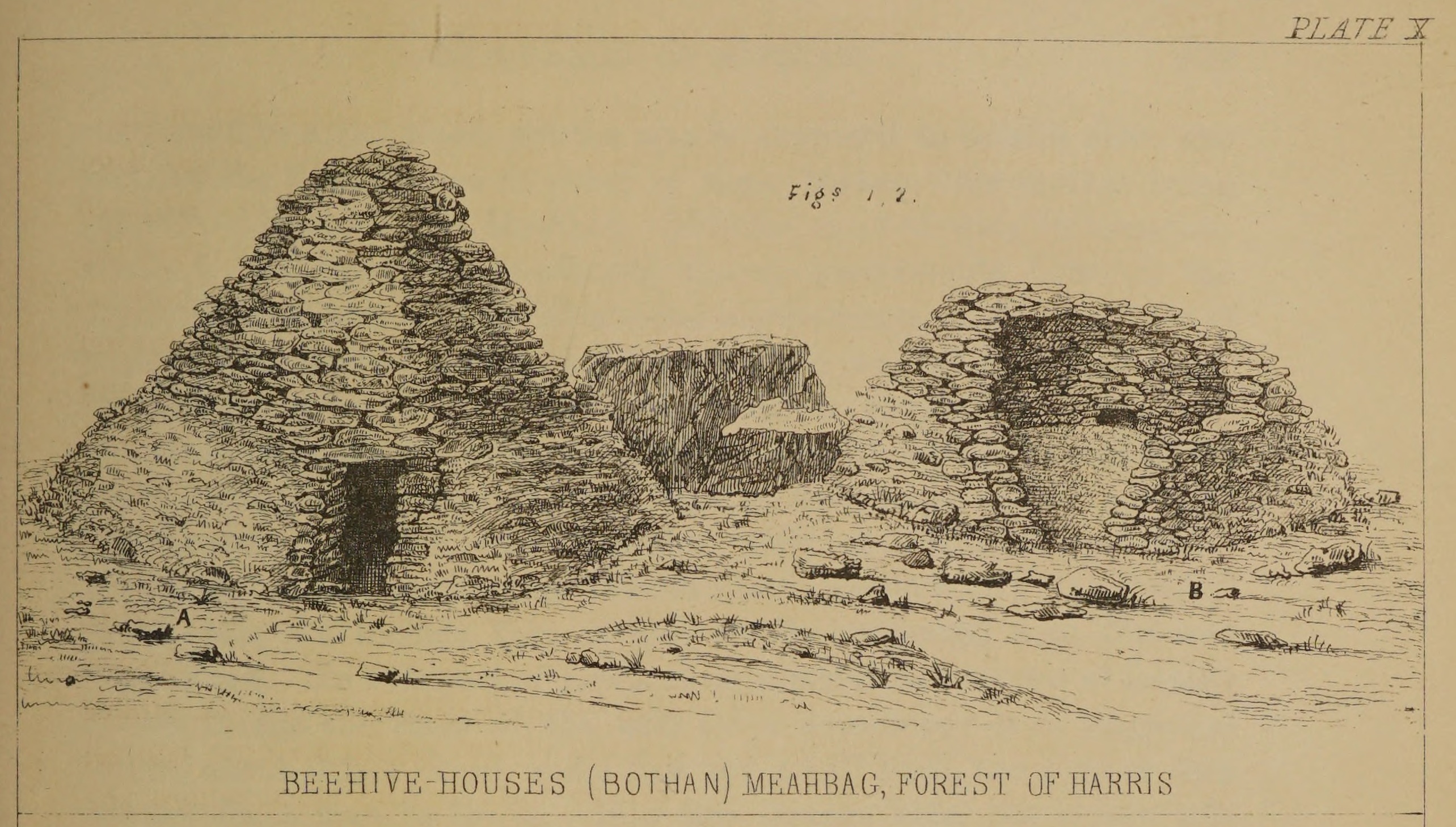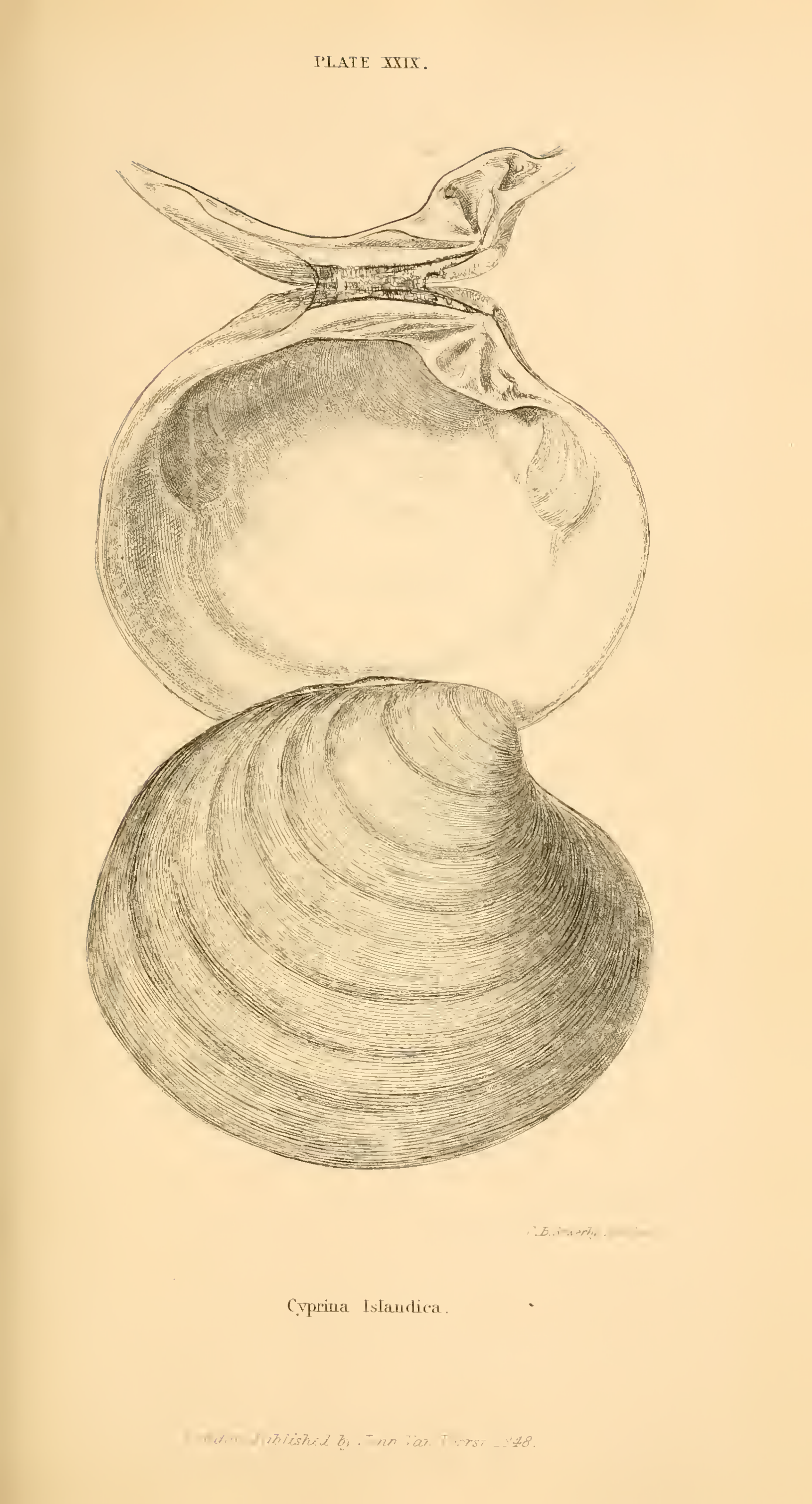F. W. L. Thomas on:
[Wikipedia]
[Google]
[Amazon]

 His work as a hydrographic surveyor was mainly in Scotland. The earliest work, when he was assisting his father, was in Orkney, and he continued this after his father's death. He was then employed in the
His work as a hydrographic surveyor was mainly in Scotland. The earliest work, when he was assisting his father, was in Orkney, and he continued this after his father's death. He was then employed in the
Plan of the antiquities of
 Thomas was also important as a naturalist, mainly collecting zoophytes (
Thomas was also important as a naturalist, mainly collecting zoophytes (Volume 2Volume 3Volume 4
and Jeffreys (1869).Volume 1Volume 2Volume 3Volume 4Volume 5
Rendall (1956) regarded Thomas as particularly important among the early conchologists, particularly for his work in Orkney. He provided details of the location and depth in which specimens were found, and many of his specimens were of rarer species, indicating that he was familiar with the commoner ones.
 Thomas was interested in the people of the islands as well as in the archaeological remains. He noted that some of the beehive houses in Lewis and Harris were still in use as dwellings for the summer pastures, whereas elsewhere in Scotland and Ireland such buildings had been abandoned or were only used for storage. He described the living arrangements in these houses, as well as recounting legends associated with them, such as that of the shape-shifting
Thomas was interested in the people of the islands as well as in the archaeological remains. He noted that some of the beehive houses in Lewis and Harris were still in use as dwellings for the summer pastures, whereas elsewhere in Scotland and Ireland such buildings had been abandoned or were only used for storage. He described the living arrangements in these houses, as well as recounting legends associated with them, such as that of the shape-shifting
Coasts of Scotland on marine charts, 1580s-1900s
at the

Captain
Captain is a title, an appellative for the commanding officer of a military unit; the supreme leader of a navy ship, merchant ship, aeroplane, spacecraft, or other vessel; or the commander of a port, fire or police department, election precinct, e ...
Frederick William Leopold Thomas, c.1812–1885, RN, FSA (Scot) was a naval officer
An officer is a person who holds a position of authority as a member of an armed force or uniformed service.
Broadly speaking, "officer" means a commissioned officer, a non-commissioned officer, or a warrant officer. However, absent contextu ...
, photographer, and historian, noted for his surveys of Scotland, and for taking the first photographs of St Kilda.
Life
Thomas was born about 1812, his father George Thomas being a Master in theRoyal Navy
The Royal Navy (RN) is the United Kingdom's naval warfare force. Although warships were used by English and Scottish kings from the early medieval period, the first major maritime engagements were fought in the Hundred Years' War against Fr ...
. He joined his father's surveying ship, in January 1827. He passed his examination in 1835. He served as mate and assistant surveyor in ''Investigator'', and then in ''HMS Mastiff'', also under his father's command. He was promoted to Lieutenant in 1841, taking command of the ''Woodlark''. He was promoted to Commander in 1860, and retired with the rank of Captain in 1864. He married Frances Sarah Bousfield on 2 December 1841. They had one child, a son, who died in 1850. Thomas died in Edinburgh in 1885.
Surveying on sea and land
 His work as a hydrographic surveyor was mainly in Scotland. The earliest work, when he was assisting his father, was in Orkney, and he continued this after his father's death. He was then employed in the
His work as a hydrographic surveyor was mainly in Scotland. The earliest work, when he was assisting his father, was in Orkney, and he continued this after his father's death. He was then employed in the Firth of Forth
The Firth of Forth () is the estuary, or firth, of several Scottish rivers including the River Forth. It meets the North Sea with Fife on the north coast and Lothian on the south.
Name
''Firth'' is a cognate of ''fjord'', a Norse word meani ...
and later in the Western Isles. His surveying work resulted in at least 15 charts and several contributions to Sailing Directions. As well as hydrographic surveying, Thomas carried out important work on the archaeology of the northern and western isles. This involved relatively little excavation, but much surveying and recording. He authored several papers on this work, from 1851, including a plan of the barrows, standing stones and other structures around Stenness
Stenness (pronounced ) ( non, Steinnes; nrn, Stennes) is a village and parish on the Orkney Mainland in Scotland. It contains several notable prehistoric monuments including the Standing Stones of Stenness and the Ring of Brodgar.
Geography
St ...
, Orkney
Orkney (; sco, Orkney; on, Orkneyjar; nrn, Orknøjar), also known as the Orkney Islands, is an archipelago in the Northern Isles of Scotland, situated off the north coast of the island of Great Britain. Orkney is 10 miles (16 km) north ...
(Thomas, 1851) which was the first detailed survey of this area; and descriptions of buildings such as black houses, beehive houses and brochs
A broch is an Iron Age drystone hollow-walled structure found in Scotland. Brochs belong to the classification "complex Atlantic roundhouse" devised by Scottish archaeologists in the 1980s. Their origin is a matter of some controversy.
Origin ...
in the Outer Hebrides
The Outer Hebrides () or Western Isles ( gd, Na h-Eileanan Siar or or ("islands of the strangers"); sco, Waster Isles), sometimes known as the Long Isle/Long Island ( gd, An t-Eilean Fada, links=no), is an island chain off the west coas ...
(Thomas, 1862, 1890).
Plan of the antiquities of
Stenness
Stenness (pronounced ) ( non, Steinnes; nrn, Stennes) is a village and parish on the Orkney Mainland in Scotland. It contains several notable prehistoric monuments including the Standing Stones of Stenness and the Ring of Brodgar.
Geography
St ...
, Orkney, from Thomas (1851)
Naturalist
 Thomas was also important as a naturalist, mainly collecting zoophytes (
Thomas was also important as a naturalist, mainly collecting zoophytes (coelenterates
Coelenterata is a term encompassing the animal phyla Cnidaria ( coral animals, true jellies, sea anemones, sea pens, and their relatives) and Ctenophora (comb jellies). The name comes , referring to the hollow body cavity common to these two phyl ...
and bryozoa
Bryozoa (also known as the Polyzoa, Ectoprocta or commonly as moss animals) are a phylum of simple, aquatic invertebrate animals, nearly all living in sedentary colonies. Typically about long, they have a special feeding structure called a ...
) and molluscs
Mollusca is the second-largest phylum of invertebrate animals after the Arthropoda, the members of which are known as molluscs or mollusks (). Around 85,000 extant species of molluscs are recognized. The number of fossil species is estim ...
. His specimens are frequently referred to in the major works on zoophytes by Johnston (1847)
and on molluscs by Forbes and Hanley (1853)Volume 1People of the Islands
 Thomas was interested in the people of the islands as well as in the archaeological remains. He noted that some of the beehive houses in Lewis and Harris were still in use as dwellings for the summer pastures, whereas elsewhere in Scotland and Ireland such buildings had been abandoned or were only used for storage. He described the living arrangements in these houses, as well as recounting legends associated with them, such as that of the shape-shifting
Thomas was interested in the people of the islands as well as in the archaeological remains. He noted that some of the beehive houses in Lewis and Harris were still in use as dwellings for the summer pastures, whereas elsewhere in Scotland and Ireland such buildings had been abandoned or were only used for storage. He described the living arrangements in these houses, as well as recounting legends associated with them, such as that of the shape-shifting Each-uisge
The each-uisge (, literally " water horse") is a water spirit in Scottish folklore, known as the each-uisce (anglicized as ''aughisky'' or ''ech-ushkya'') in Ireland and cabyll-ushtey on the Isle of Man. It usually takes the form of a horse, an ...
or water horse (Thomas, 1862). In 1863, in the company of fellow antiquarian Arthur Mitchell on Lewis, he met a stone-breaker eating out of a traditional unglazed earthenware pot, and they investigated the making and use of these vessels, known as craggans. He also collected at least one ballad (Thomas, 1855) and recounted traditional stories of clan warfare and revenge (Thomas, 1878,1880). In 1857 his wife Frances travelled with him to Harris
Harris may refer to:
Places Canada
* Harris, Ontario
* Northland Pyrite Mine (also known as Harris Mine)
* Harris, Saskatchewan
* Rural Municipality of Harris No. 316, Saskatchewan
Scotland
* Harris, Outer Hebrides (sometimes called the Isle of ...
, where they set up home for a while. She was much struck with the poverty of the islanders, exacerbated by their isolation. Frances saw there could be a demand for woollen goods on the mainland, and first promoted knitted stockings, and then together with Lady Dunmore, developed a market for Harris Tweed
Harris Tweed, (''Clò Mór'' or ''Clò Hearach'' in Gaelic) is a tweed cloth that is handwoven by islanders at their homes in the Outer Hebrides of Scotland, finished in the Outer Hebrides, and made from pure virgin wool dyed and spun in th ...
. Thomas sailed with Captain Otter, on HMS ''Porcupine'', on a voyage to St Kilda in 1860. There he took the earliest photographs ever taken of St Kilda. While on St Kilda, Thomas made the acquaintance of the Rev. Mr. Kennedy, and asked him for information on antiquarian matters. The reply came from his niece, Anne Kennedy, and provides many details.
Affiliations
Thomas was a member of the Photographic Society of Scotland and theSociety of Antiquaries of Scotland
The Society of Antiquaries of Scotland is the senior antiquarian body of Scotland, with its headquarters in the National Museum of Scotland, Chambers Street, Edinburgh. The Society's aim is to promote the cultural heritage of Scotland.
The usua ...
.
Modern media
In 2004, a television documentary employing Thomas's 1860 photography was broadcast onGrampian Television
Grampian Television was the original name of the Channel 3 service for the north of Scotland founded in 1961 and now named STV. The northern region's coverage area includes the Northern Isles, Western Isles, Highlands (except Fort William a ...
.
References
Bibliography
* * * * * * * * * * * * *External links
Coasts of Scotland on marine charts, 1580s-1900s
at the
National Library of Scotland
The National Library of Scotland (NLS) ( gd, Leabharlann Nàiseanta na h-Alba, sco, Naitional Leebrar o Scotland) is the legal deposit library of Scotland and is one of the country's National Collections. As one of the largest libraries in t ...
.
{{DEFAULTSORT:Thomas, F.W.L.
19th-century Scottish historians
19th-century Scottish photographers
People associated with Edinburgh
Royal Navy officers
1885 deaths
1812 births
Scottish hydrographers
Fellows of the Society of Antiquaries of Scotland